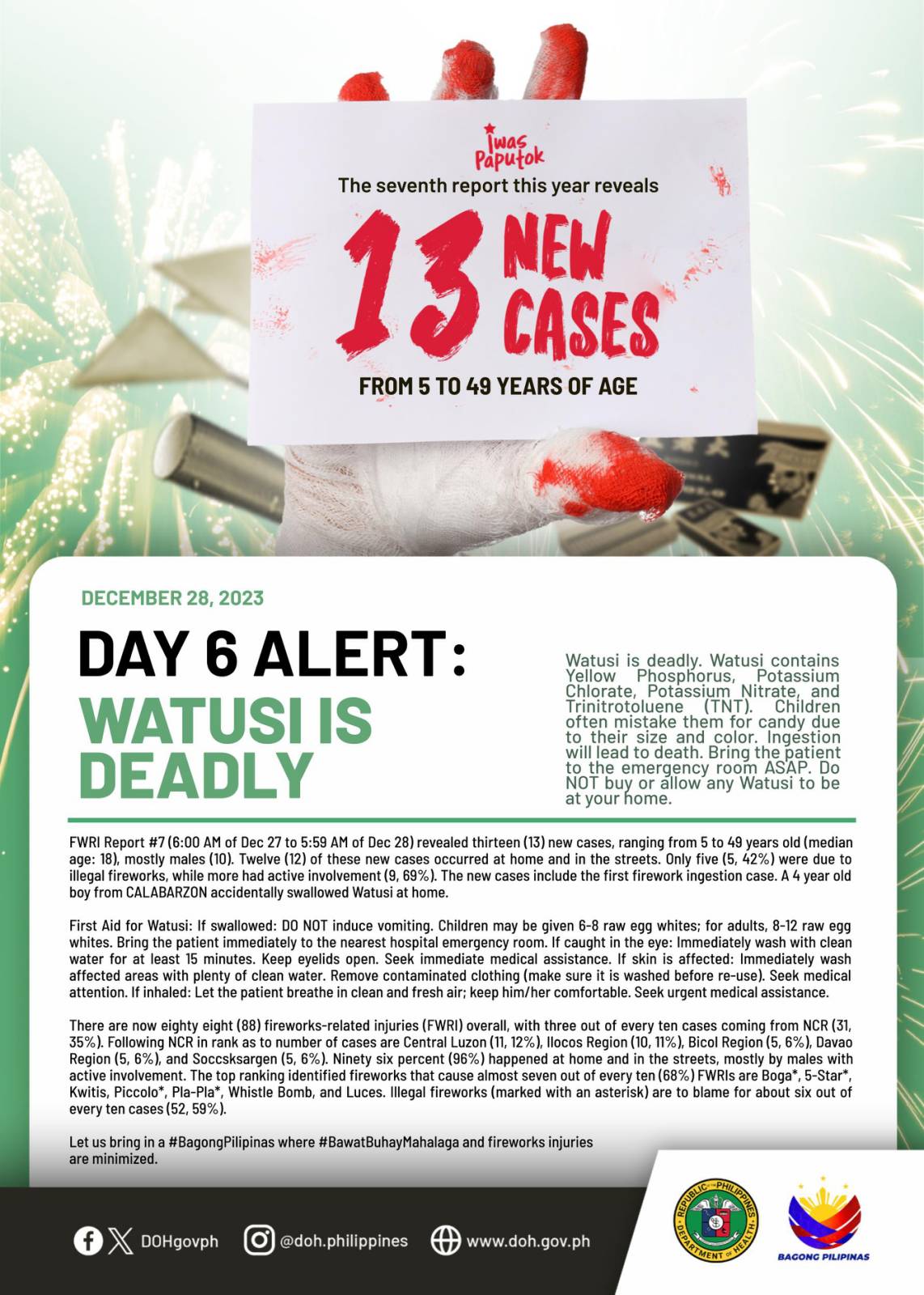DOH logs 13 new fireworks-related injuries amid holiday celebrations
The total number of fireworks-related injuries climbed to 88, after the Department of Health (DOH) reported 13 new cases on Thursday, Dec. 28.

Based on the DOH's Fireworks-Related Injuries (FWRI) report, from 6 a.m. on Dec. 27 to 5:59 a.m. on Dec. 28, the new cases involved individuals aged five to 49, with a median age of 18.
One of the new cases involved the accidental ingestion of "watusi" by a four-year-old boy from Calabarzon, which resulted in the first case of firework ingestion reported this holiday season.
Related to this, the department emphasized that watusi is "deadly" and contains hazardous substances, such as yellow phosphorus, potassium chlorate, potassium nitrate, and trinitrotoluene (TNT).
The health agency advised against purchasing or possessing watusi, citing the possibility that children may mistake them for candy due to their size and color.
It added that in cases of ingestion, immediate emergency medical attention is critical.
The DOH also cautioned against inducing vomiting.
It noted that children may be given six to eight raw egg whites, while adults are recommended to consume eight to 12 raw egg whites, and the public is urged to bring patients to the nearest hospital emergency room promptly.
“If caught in the eye, immediately wash with clean water for at least 15 minutes. Keep your eyelids open. Seek immediate medical assistance. If skin is affected, immediately wash affected areas with plenty of clean water,” the DOH said.
Majority of injured by fireworks were men
DOH pointed out that the injuries mostly involved men, particularly boys under the age of 10.
It added that 12 of the new cases happened at home or on the streets, highlighting the importance of heightened awareness and safety precautions during the holiday season.
The use of "illegal fireworks" was blamed for 42 percent of the injuries, with active participation being found in 69 percent of the cases.
Moreover, the report also highlighted the regional distribution of FWRI cases, with the National Capital Region accounting for the highest percentage at 35 percent, followed by Central Luzon (12 percent) and the Ilocos Region (11 percent).
Among the identified culprits responsible for nearly 70 percent of FWRI incidents are "Boga," "5-Star," "kwitis," "piccolo," "pla-pla," "whistle bomb," and "luces."
Illegal fireworks, constituting 59 percent of cases, were identified as a “major” contributor to the injuries.